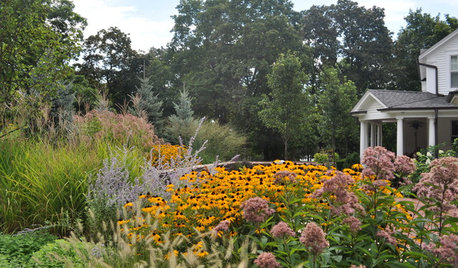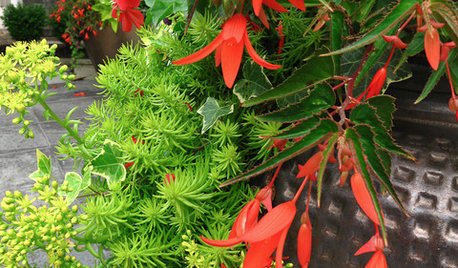Container Fertilizers--Any acceptable conventional products?
kristimama
13 years ago
Related Stories

GARDENING GUIDESGet on a Composting Kick (Hello, Free Fertilizer!)
Quit shelling out for pricey substitutes that aren’t even as good. Here’s how to give your soil the best while lightening your trash load
Full Story
ARCHITECTURE8 Modern Hamptons Homes Buck Convention
Defying the overblown architecture popular in this affluent Long Island area, these modern residences take a more modest approach
Full Story
GARDENING GUIDESHow to Switch to an Organic Landscape Plan
Ditch the chemicals for a naturally beautiful lawn and garden, using living fertilizers and other nontoxic treatments
Full Story
GARDENING GUIDESPacific Northwest Gardener: What to Do in September
Put in cool-weather veggies, fertilize your lawn and tidy the garden this month before chilly weather arrives
Full Story
GARDENING GUIDES6 Wonderfully Easy Roses for Any Gardener
Look like an expert even if you're just starting out, with these low-maintenance gems of the rose world
Full Story
MOST POPULAR12 Key Decorating Tips to Make Any Room Better
Get a great result even without an experienced touch by following these basic design guidelines
Full Story
GARDENING GUIDESCommon Myths That May Be Hurting Your Garden
Discover the truth about fertilizer, soil, staking and more to keep your plants healthy and happy
Full Story
GARDENING GUIDESHow to Keep Your Citrus Trees Well Fed and Healthy
Ripe for some citrus fertilizer know-how? This mini guide will help your lemon, orange and grapefruit trees flourish
Full Story
FARM YOUR YARDHow to Grow Vegetables in Containers
Get glorious vegetables and fruits on your patio with a pro’s guidance — including his personal recipe for potting mix
Full Story
GARDENING GUIDESSuperstar Annuals for Containers and Baskets
High performing, low maintenance and all-around gorgeous, these container plants go the distance while you sit back and relax
Full Story






gardengal48 (PNW Z8/9)
Dan _Staley (5b Sunset 2B AHS 7)
Related Professionals
Surprise Landscape Architects & Landscape Designers · Waterbury Landscape Contractors · Burien Landscape Contractors · New Cassel Landscape Contractors · Wethersfield Landscape Contractors · Raytown Landscape Contractors · Ferguson Landscape Contractors · Palos Heights Landscape Contractors · Elkridge Decks, Patios & Outdoor Enclosures · Estero Decks, Patios & Outdoor Enclosures · Fort Worth Decks, Patios & Outdoor Enclosures · Riverside Decks, Patios & Outdoor Enclosures · Spokane Decks, Patios & Outdoor Enclosures · Towson Decks, Patios & Outdoor Enclosures · Westford Decks, Patios & Outdoor Enclosuresgardengal48 (PNW Z8/9)
dicot
Dan _Staley (5b Sunset 2B AHS 7)
dicot
hydroponicsnutrients
tapla (mid-Michigan, USDA z5b-6a)
TheMasterGardener1
Kimmsr
TheMasterGardener1
gardengal48 (PNW Z8/9)
tapla (mid-Michigan, USDA z5b-6a)
TheMasterGardener1
tapla (mid-Michigan, USDA z5b-6a)
Dan _Staley (5b Sunset 2B AHS 7)
tapla (mid-Michigan, USDA z5b-6a)
Dan _Staley (5b Sunset 2B AHS 7)
TheMasterGardener1
Kimmsr
tapla (mid-Michigan, USDA z5b-6a)
TheMasterGardener1
billy_b
prestons_garden
end3
TheMasterGardener1
mgm7000
mgm7000
mgm7000
TheMasterGardener1
prestons_garden